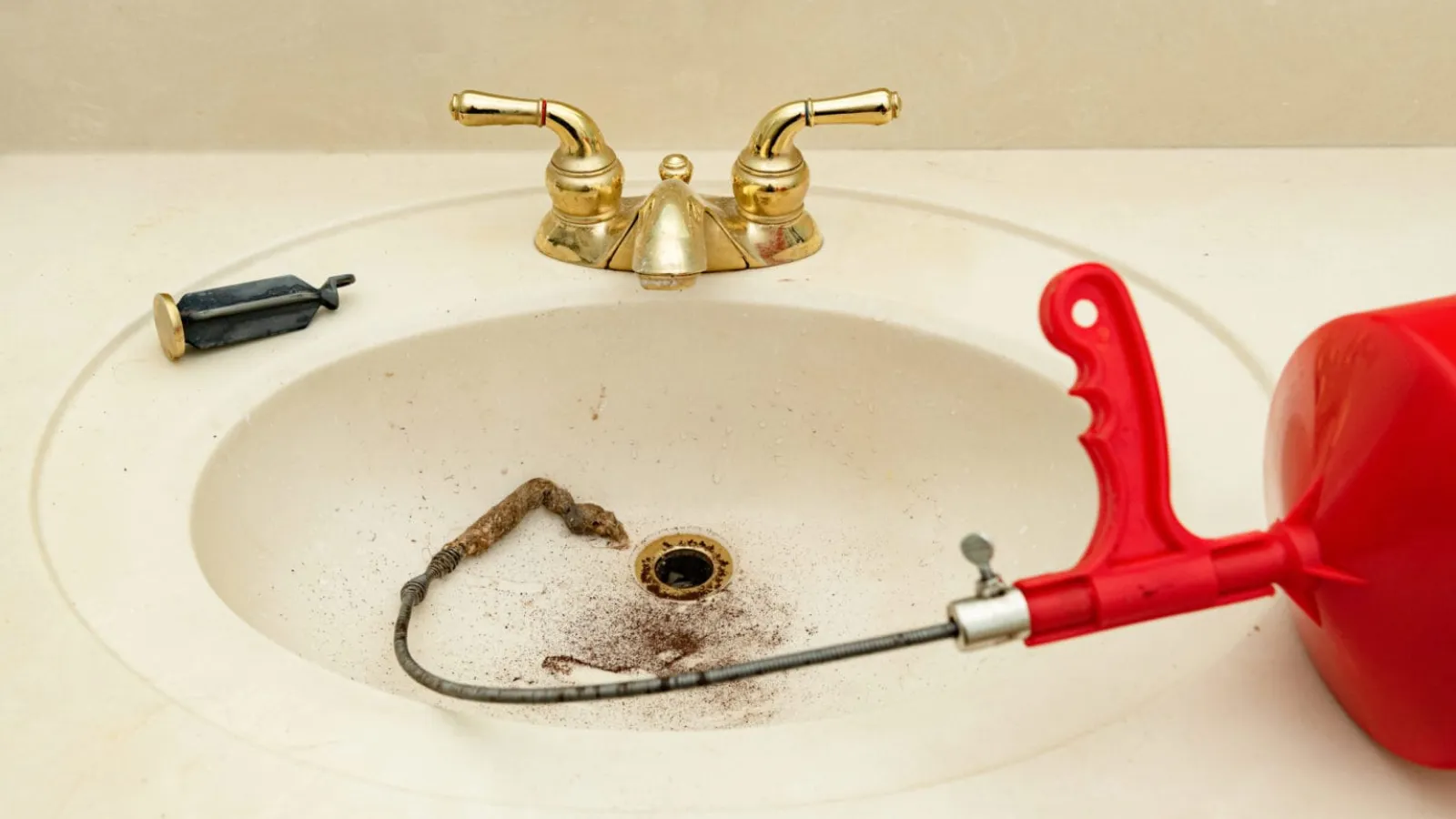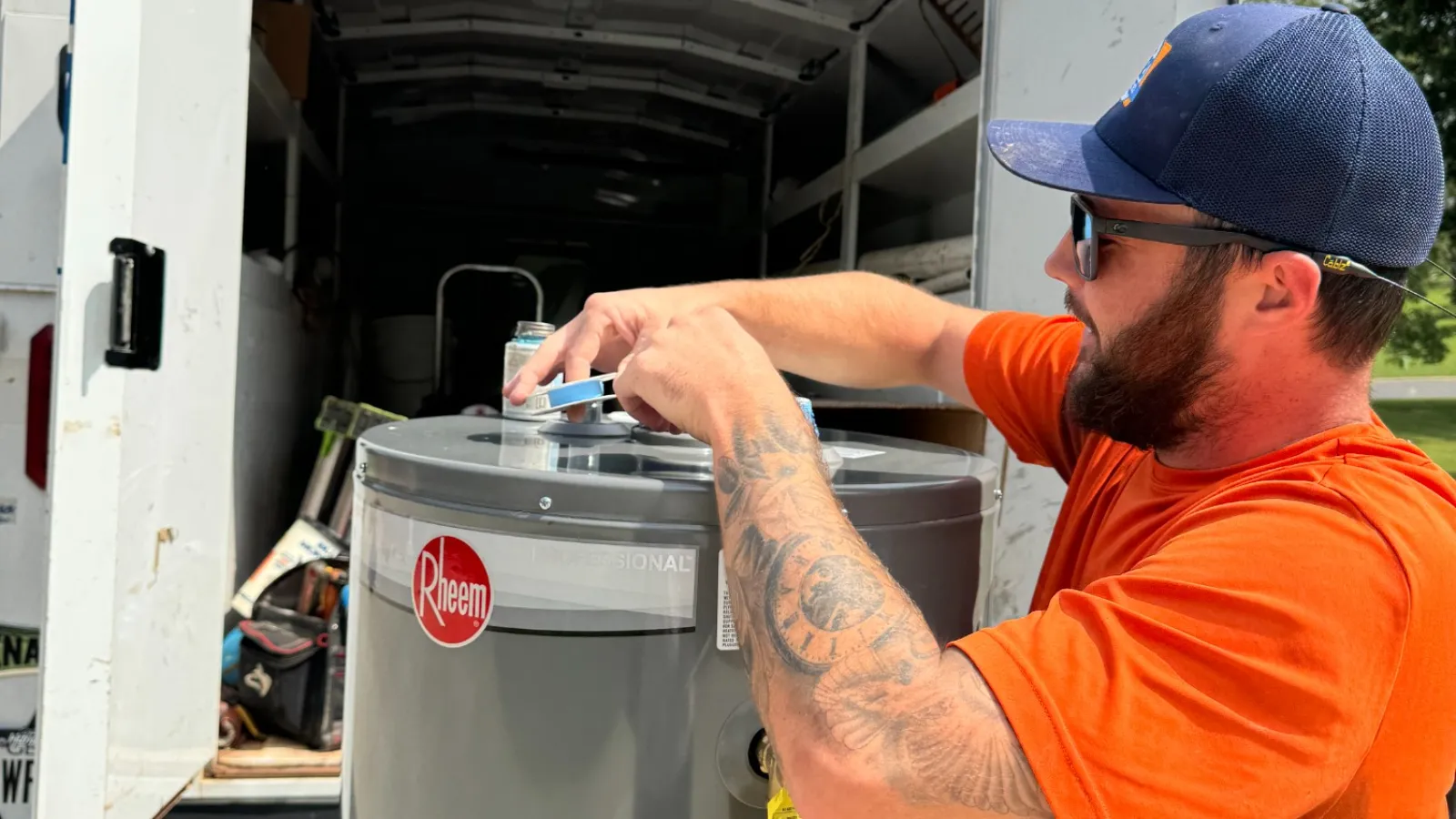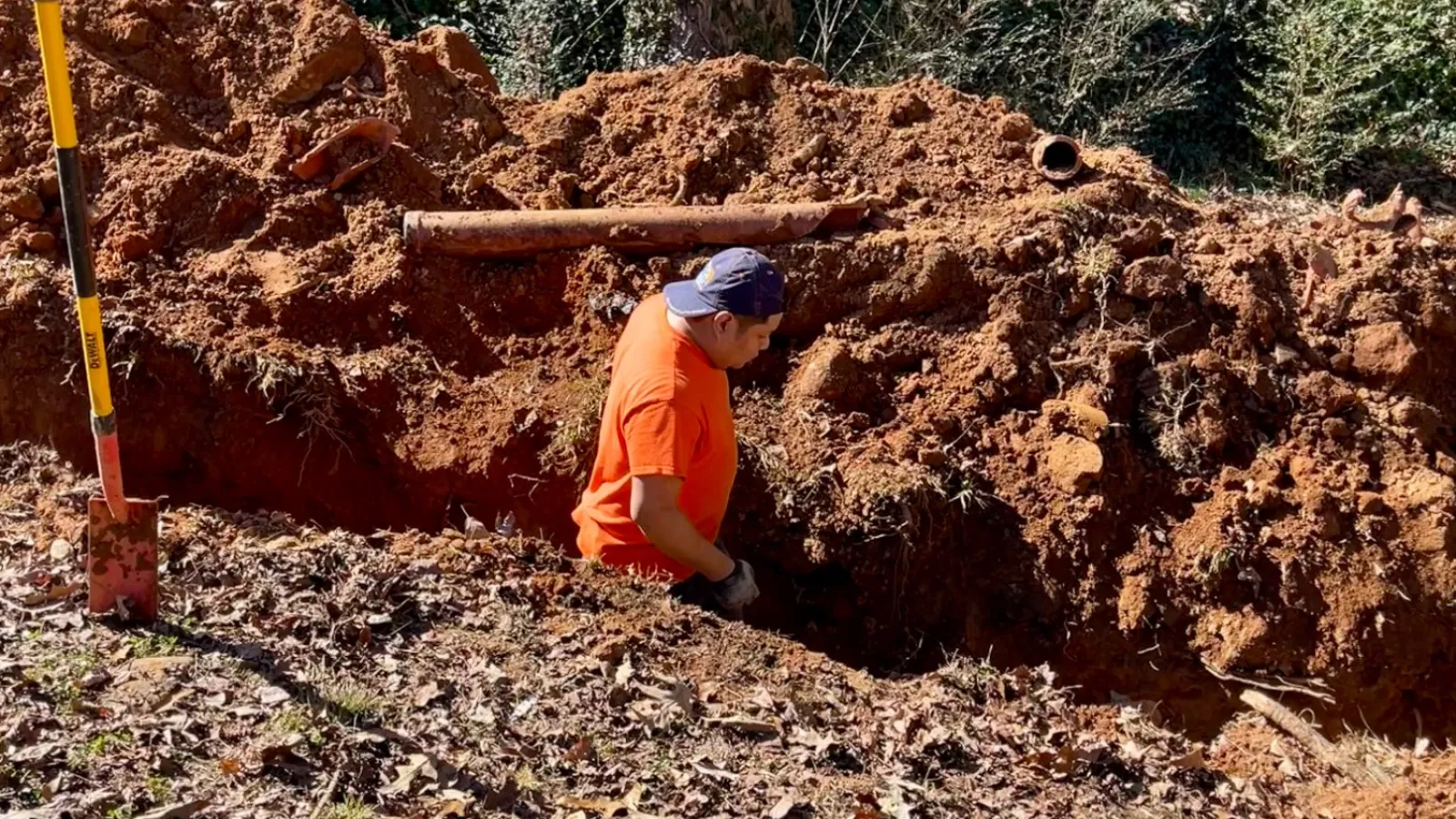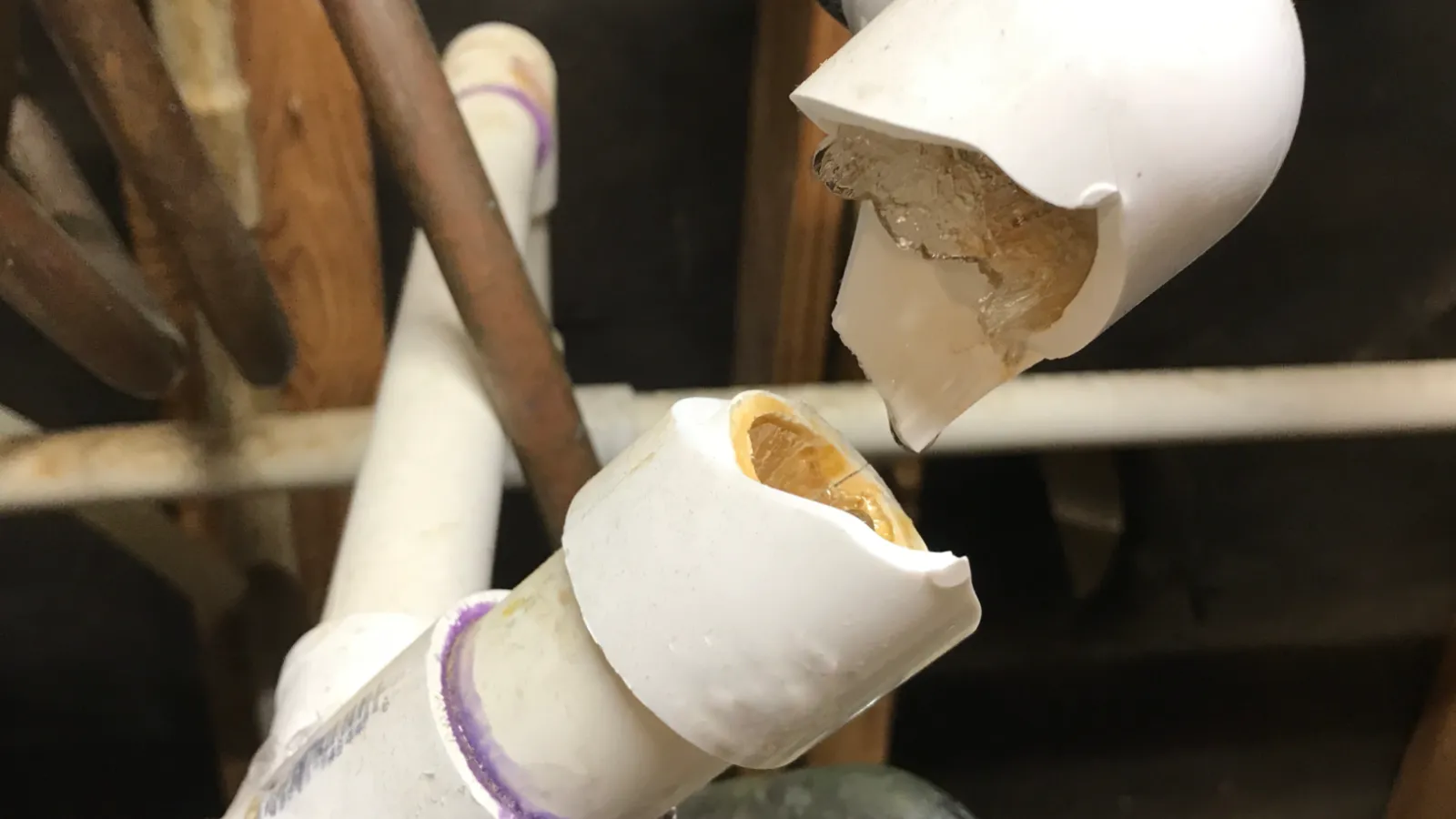To clear away tough sink or toilet clogs, Atlanta area homeowners need to know how to use a drain snake the right way. This plumbing tool is a step above a plunger, but not as tough as the professional drain cleaning tools used by plumbers. While they give you a better chance at clearing that stubborn clog, there is some risk of damage if you use them the wrong way.
Learn how to use a drain snake properly from Estes Services’ skilled team of plumbers. Below, we’ve compiled the information you need to know in order to operate a drain snake correctly, so you are able to get at that clog without causing damage to your plumbing lines.
If this task proves too tough for your drain snake, it’s a good idea to consider calling a plumber. Our plumbers use powerful drain cleaning tools and video inspection to deliver debris-free drain lines and smooth drainage throughout your home.
How Does a Drain Snake Work?
A drain snake is also referred to a plumber’s snake or a drain auger. This tool consists of a long cable made of flexible metal with an auger (which looks like an uncoiled spring, corkscrew,or drill bit) at one end and a crank handle at the other end.
They come in differing lengths. Most available for homeowners measure about 50 feet long or less. Typically, they are hand-powered – you manually turn the crank handle. When not in use, the snake coils up for easy transport and storage. The similar tools used by plumbers to professionally clear clogs are often powered and extend further to reach clogs deep down in the drain lines.
When in use, the auger end of the drain snake is inserted down into the drain and fed further by the cable. The drain auger makes physical contact with the clog materials to dislodge and clear the obstruction.
Step-by-Step Instructions for Drain Snake Use
To use a drain snake to clear a clog in a sink drain pipe, follow these steps:
- Optional but recommended – remove the P-trap, which is the bent pipe that sits right below the sink. This component can become damaged when using a plumber’s snake, so it’s best to remove and protect it. Inspect it to see if the clog material is stuck within this piece of piping. If it is, clear it, clean it and reassemble, as your job is done! If not, just clean it out for good measure and set it aside.
- Optional but recommended – remove the trap arm, which is the pipe that connects the P-trap to the wall pipe. Loosen the nut that connects the trap arm to the wall. If there is no nut, the arm is likely glued on, so leave it alone. Inspect the pipe, clearing it if the clog is located here, then reassembling the arm and P-trap. If there is no clog in the arm, clean the component and set it aside.
- The first step when using a drain snake is to slowly feed the auger tip of the plumber’s snake into the wall pipe (or P-trap/trap arm if you did not remove them. If you didn’t, run cold water as you snake the line). As you feed the auger head into the pipe, don’t use excessive force or you could damage the pipe.
- Turn the handle to give the auger more slack. Keep the handle close to the pipe entrance, and turn it at a steady rate.
- When you feel resistance as you try to turn the handle, you’ve reached the clog. At the clog, you want to rotate the auger tip up and down and back and forth – this motion works to break up the clog material. Be thorough but take care to avoid scraping the pipe walls. If you hear a scraping sound, stop and readjust before continuing to move the auger.
- Continue the motions until the resistance you felt is gone and the snake has extended its entire length. (If the auger becomes stuck, retract it from the pipe – this may remove the clog, too.)
- Pull the cable back and remove any clog material attached to it.
- Replace the P-trap and trap arm, if applicable.
- Run water down the sink drain to determine if the clog has been eliminated. If drainage is still poor, repeat the process, though you do not want to do it too much, as you may damage your plumbing lines.
Generally, if snaking doesn’t clear your clog, it’s best to call a plumber for professional drain cleaning services. Knowing how to use a plumber’s snake the right way doesn’t guarantee easy clog removal; some are too tough or too far to access with DIY methods.
Leave the Drain Snaking to the Pros
If you still don’t get the hang of how to use a drain snake or simply do not want to tackle this task, that’s OK – that’s what we are here for! Estes Services’ licensed Atlanta plumbers perform thorough drain cleaning services to clear clogs and debris, which delivers better drainage throughout your home. Make an appointment for drain cleaning when you contact us today!




